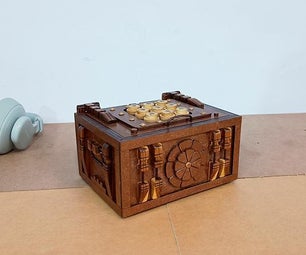Introduction: Rope From Bale Twine Waste
A winter of feeding sheep generates a lot of baling twine cuttings. I've always thought there should be a use for them. Here's one idea. Make rope. The rope making machines of old are pretty awesome. You see them at county fairs and plowing matches. You can see one working at this link. Rope Making The problem here is you need long twine. Mine are only 6ft long. My answer is to braid them together.
Supplies
Baling twine (lots of it)
A latch and hook tool
Patience
Step 1: Collect Your Pieces
As I used bales of hay, I always cut the knots off. I didn't think they would be of much use, so they were the only waste.
Step 2: Find an Anchor Point
I worked in the back of my barn where the hay had been. The post hole auger for the tractor was chained to a beam. I figured this would be a good stable location. I tied 12 strands to it and started the process.
Step 3: Add Pieces As You Go
As I worked my way along, I staggered the addition of new pieces. I would make sure they were braided in with the tail ends they were replacing by at least a foot. The first splice required me to cut the sets of 4 at different lengths. As one splice was ending another was soon to begin.
Step 4: This Takes Time
I found that I could only do this for an hour or so at a time. So it became part of my morning chores. Once I had no more room to back up I would wind the finished piece around the head of the auger and quit for the day. I would say I worked at this for a month or so every morning.
I made all the ropes before starting to finish the ends. I would have
changed my process a bit, had I known how much work it was going to be weaving the ends together. I would suggest starting by folding a bundle of 6 in half. Loosely tie the bundle at the bend. Stagger them in sets of 4 pieces. By staggering the groups of 4 at the start you will avoid having to cut the sets to stagger your first splices. As you work down the length of rope you may have to cut some pieces. Make sure each splice is at least a foot long for strength.
Step 5: Weaving in the Ends
A hook and latch tool is required to weave the ends in. One piece at a time was max for me. I broke my first hook trying to pull more than one.
Step 6: Add Hardware
I added some hardware. This came in handy when I picked up a new mattress in my pickup truck. It connected easily to the tie down loops in the box.
Step 7: The Collection
I made a collection of different lengths. With some simple hardware they could be connected together. I may not use them very often but they look impressive hanging in the barn. So far I've tied mattresses into the truck, helped my neighbor lower a heavy piece of furniture down a flight of stairs and pulled his riding mower out of a mud hole, without entering the wet area myself. Much better than having the twine end up in a landfill.

Participated in the
Reuse Contest











